I recently went on a scuba diving trip with my friend, Blair whom I met through Protector of Paradise in Fiji. I managed to convince him that the Philippines is one of the best places to dive in the world, and he should come for a visit to see for himself.
Blair is an experienced diver and has done hundreds of dives. Apparently in New Zealand, where he is from, they dive to catch food like crawfish. In the Philippines, when we do fun dives it doesn’t involve us catching our next meal. In fact, ever since I started diving, it’s just been ingrained to me never touch anything underwater.
During our first night dive, I noticed him filming a school of catfishes. He was getting really close, and this made me worry. I hoped he knew that these were not the kind of catfishes we’d catch for food! The black and white striped catfishes had venomous spines and fins that could hurt him. I eventually signaled him to stop as I could see the catfishes almost touching him!
After the dive, I brought it up and told him how scared I was for him. He admitted that he did not know that they were venomous! After that, he has learned to keep his distance from the catfishes.
I also warned him of other dangerous animals in the Philippine waters because I noticed him filming several lionfishes. There were also many instances where I saw him getting too close to the scorpionfishes. I told him those were venomous too!
When I retold this story to my other dive buddy, Sushee, she admitted that she was also unaware of the dangerous sea creatures in the Philippines. This came as a shock as she’s a local Filipina diver and I had assumed that this was covered in her dive training. Then, I realized she is a relatively new diver and had only gone diving in Anilao.
Unlike her, I actually had done several dives around the Philippines. Then, I also remembered that when I volunteered in Coral Cay Conservation, we actually spent a day learning about the dangerous marine life in the Philippines.
She then gave me the idea that maybe I should write a post about it for divers like her. (Thanks, Sush!) So, if you’re snorkeling or scuba diving in the Philippines then this list might help you to have animal attack-free and safer dives.
Here are 15 dangerous sea creatures in the Philippines you need to avoid:
1. Titan Triggerfish
As I have observed, most Filipino divers are more afraid of the Titan Triggerfish than of a shark! They’re known to chase divers and bite divers. I am yet to see stories of shark attacks in the Philippines. But, you will always find a diver sharing a story of how the titan trigger went after them.
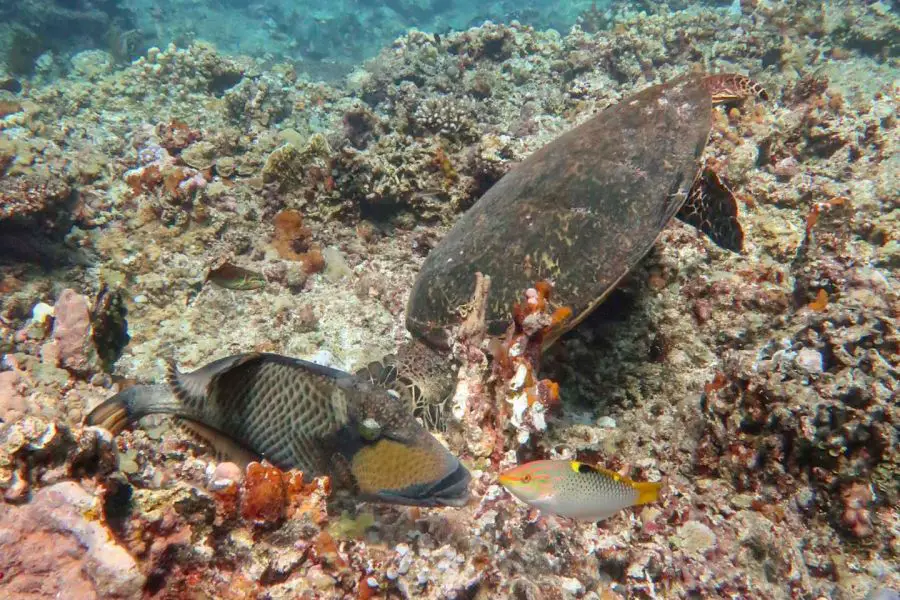
Known scientifically as Balistoides viridescens, the titan triggerfish have been known to cause serious injuries from their bites. They tend to be more aggressive during their mating and nesting season. So when you see a titan triggerfish nearby, it is best to just swim away or stay clear off its path.
If you swim on top of their nests, you are most likely to be attacked by a titan. Their territory extends upwards in the shape of a cone. In the event that you accidentally swim in their territory, your best course of action is to swim outward away from the nest. Do not swim upwards as you will still be within it’s territory.
Maintain visual contact with the titan triggerfish as you swim away. You might even want to put your fins between you and the titan triggerfish for additional barrier protection.
2. Stonefish / Scorpionfish
The Stonefish and Scorpionfish are masters of disguise. They can be difficult to spot on the reef as they look like rocks covered with algae. They have highly venomous spines which makes them part of this list of dangerous marine creatures in the Philippines. Like most ocean creatures, they will not attack unless they feel threatened.
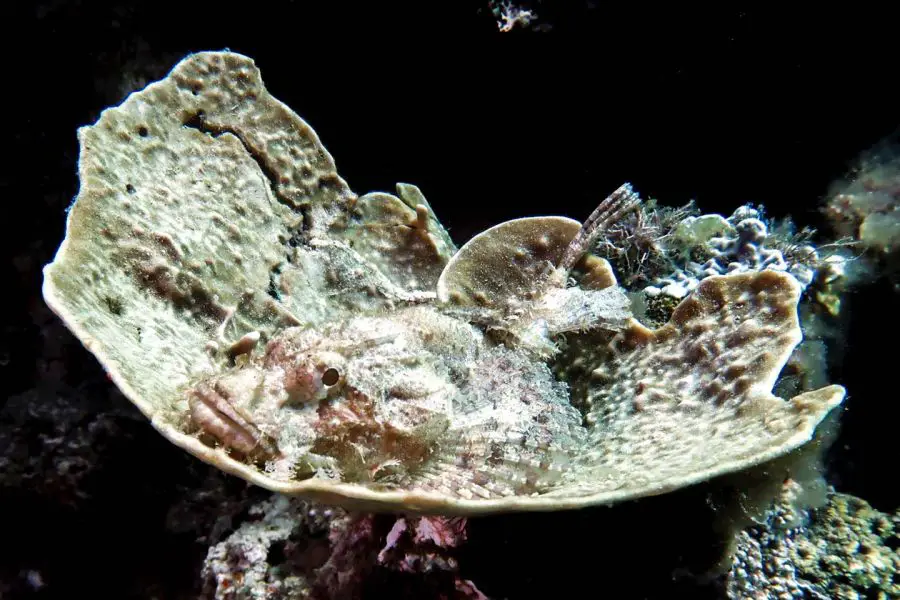
They have been known to cause pain to divers simply because the divers did not notice the scorpionfish hiding in plain sight. They went too close and it defended itself.
If you’ve been accidentally stung by a scorpionfish, immediately treat scorpionfish injuries by soaking the injured area with hot water. The sting may last for hours and each person’s reaction to the venom will be different. Seek medical attention immediately.
3. Lionfish
Lionfishes are commonly found in the Philippine waters and are also dangerous because of their venomous spines. The venom can be found in its sharp, dorsal, pelvic and anal fins. They’re very pretty to look at especially when they spread out their spines. But stay away from these mesmerizing creatures.
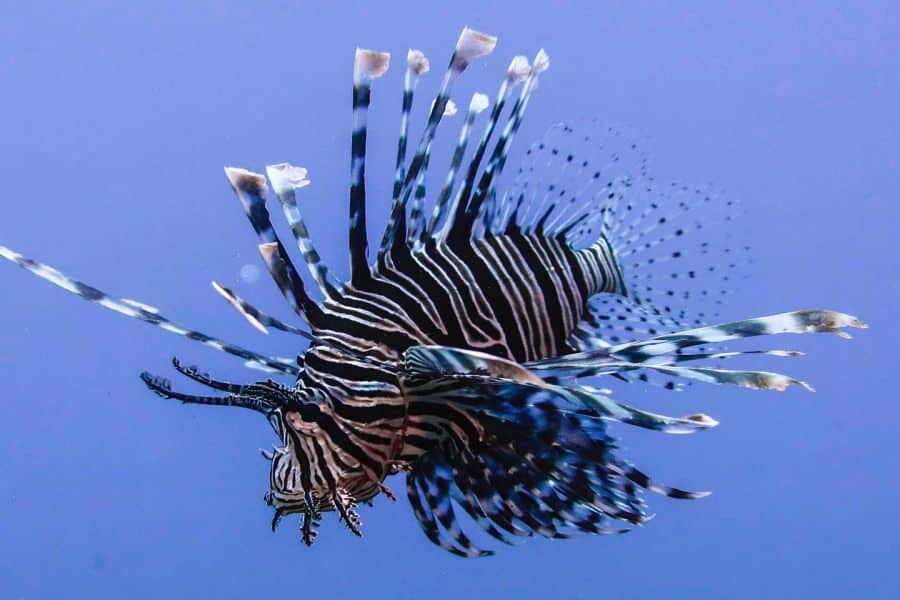
If you get injured by a lionfish, it will most likely not cause death but it will cause immense pain. However, some people might get an allergic reaction to the venom resulting in anaphylactic shock.
Like most marine injuries, seek medical attention immediately. An effective first aid treatment for lionfish sting is to also soak the area in hot water.
4. Catfish
As mentioned earlier, catfishes have venomous spines on their dorsal and pectoral fins that can cause humans discomfort if they are pricked.
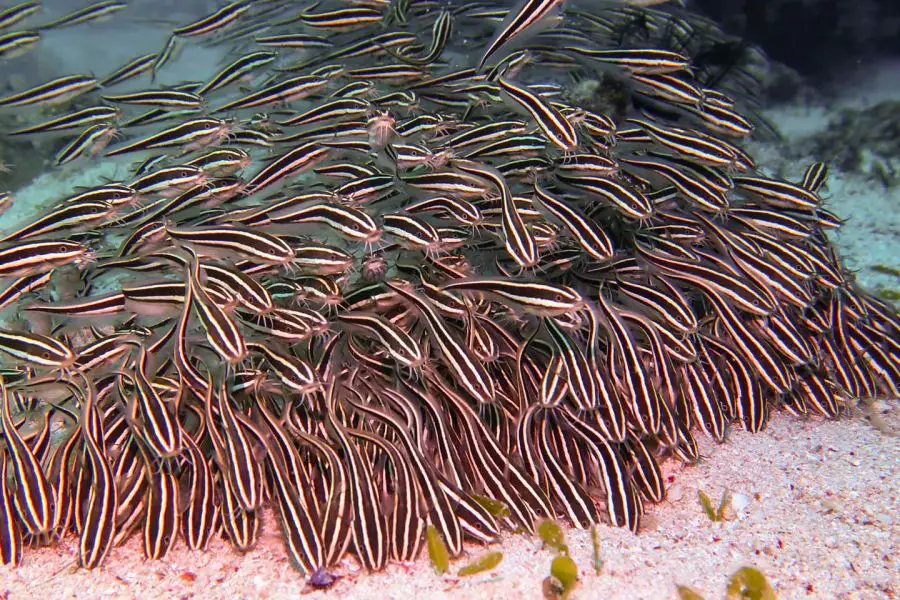
The black and white striped fish is very common in the Philippines. They are eye-catching not just because of their stripes but also because they’re often found in dense schools as they feed on the ocean floor. I consider them dangerous sea creatures that can be found in the Philippines because they look harmless but can cause you some pain.
You can treat stings by immersing the wound in hot water.
5. Moray Eels
You’ve probably seen The Little Mermaid and are familiar with Flotsam and Jetsam, the two slimy moray eels that serve Ursula. Unfortunately, the movie is not wrong in depicting them as the bad guys.
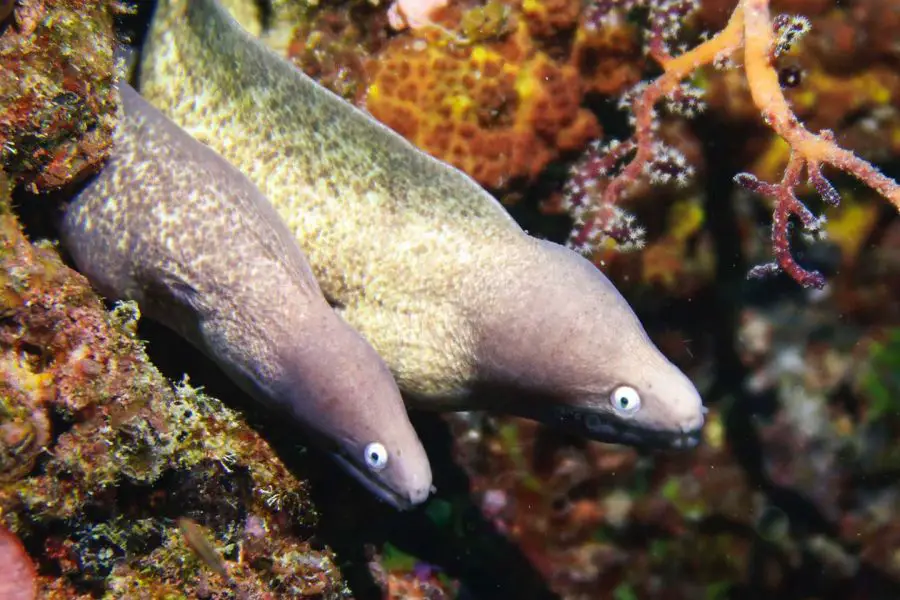
Moray eels are very dangerous as they will bite you with their razor-sharp teeth and powerful jaws. They also have a second set of jaws called Pharyngeal jaws, which makes it more difficult for their prey to escape. So stay away from the moray eels as they’ve been known to bite humans causing serious injury.
(Tip: Search Youtube for “moray eels bite off a finger”)
6. Banded Sea Snakes
Not all snakes are venomous but sea snakes definitely are. They’re not very aggressive animals but if they do bite, their venom can kill you. The good news is that they do not always inject venom when they bite.
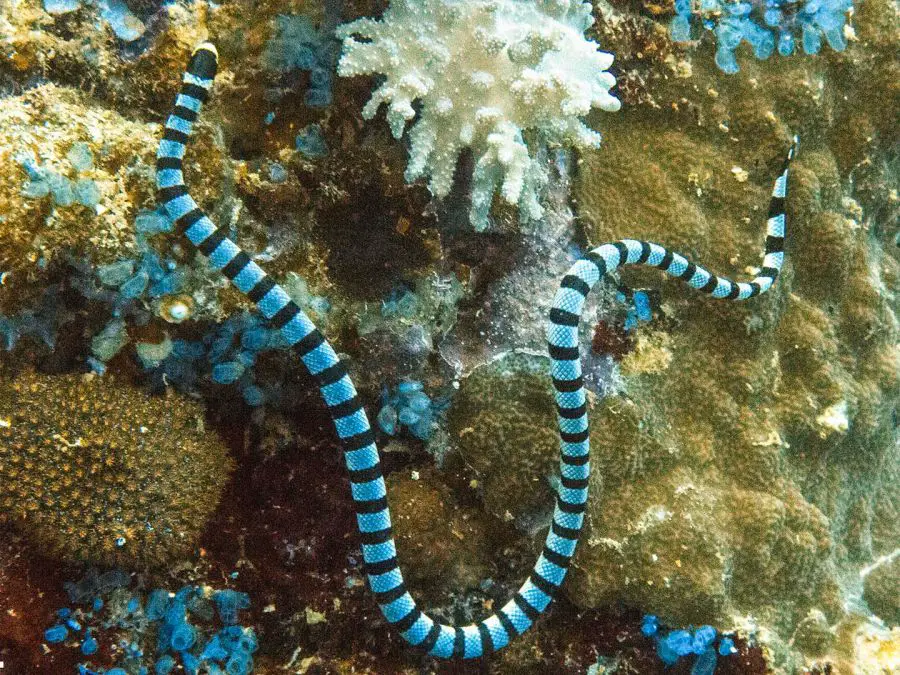
I do encounter them while diving in the Philippines and most often they swim away or hide. Thank, God!
Sea kraits are both land and sea creatures. They need to come up to the surface to get air. Do not stay above them unless you want a close encounter as they swim upward to get air.
Do you need help identifying some of the marine life in the Philippines? Check out these helpful Fish ID books!
7. Octopus
Octopuses in general are dangerous creatures. A creature with 8 arms, how can you even wrestle with that? But really it’s the venom that you need to watch out for.
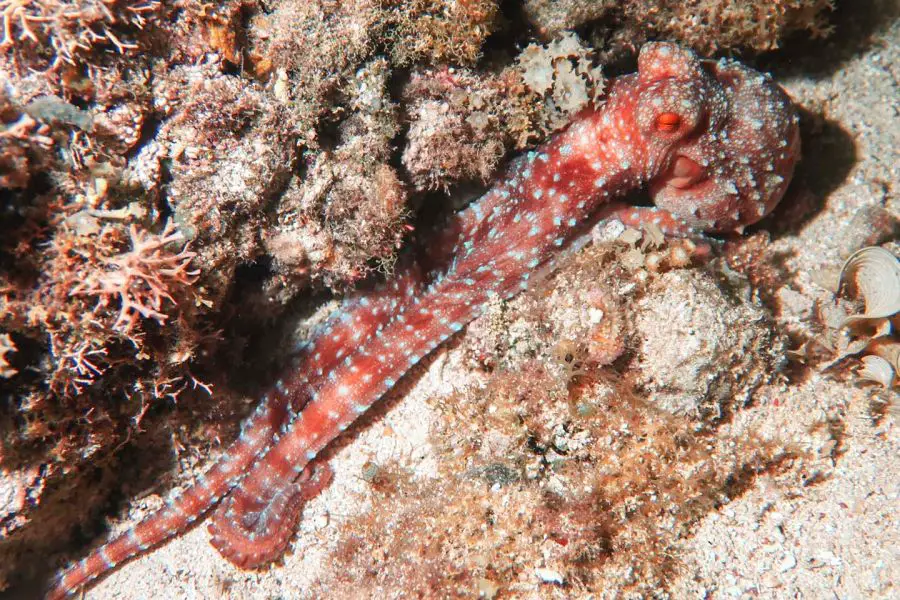
One of the deadliest sea creatures in the world can be found in the Philippines- the blue-ringed octopus. They are very tiny and attractive so one can easily think they’re harmless. But when provoked, they can deliver a bite that can kill you.
Sometimes you can find them among the rocks during low tide and locals hunt them for food, not knowing that their venom can paralyze the body’s muscles. A victim can be saved if they are given artificial respiration immediately.
8. Jellyfish
These gelatinous-looking creatures commonly known as jellyfish have tentacles that shoot out toxins meant to kill their prey. They’re usually hard to spot because of their translucent bodies, but if you do spot them, stay away and warn others of possible jellyfish attacks. Although not all jellyfish species are dangerous to humans, they have been known to cause pain, scarring, and even death.
If you do get stung by a jellyfish, do not pee on it. I repeat, do not pee or have someone pee on it. First, it’s gross. And second, it won’t help.
Immediate first aid is to apply vinegar to the injured area. Do not pour freshwater on it as it will aggravate the stinging. Make sure that the person treating you is wearing a protective glove as the stings may also hurt them.
9. Cone-snail
When I go to the beach as a kid, I used to collect seashells. One would think it’s a harmless activity. But, I became more careful when my uncle told me that some cone-shaped shells might have snails in them that are actually venomous. So be careful as sometimes the prettiest ones are actually the most dangerous ones… in shells and in life. Ha!
As a general rule while diving or walking by the beach, take nothing except trash- these are after all more dangerous for marine animals.
10. Sea Urchins
If you’ve gone snorkeling or walked the shores during low tide, you have most likely seen the long spine urchins. I’ve included them in the list because they are very common and can cause injury even for non-scuba divers.
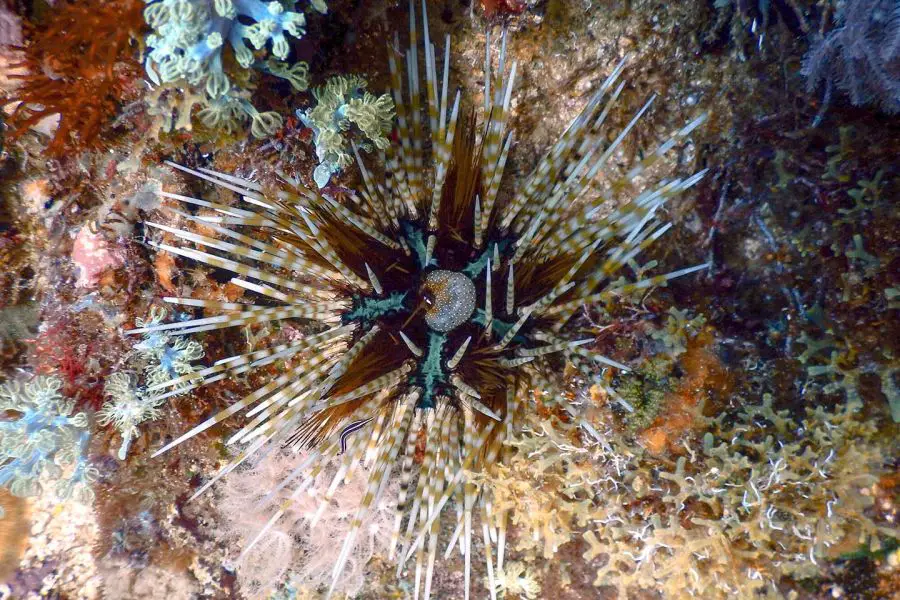
If you do get spiked, remove the entire spine with tweezers. Soak the area in hot water for 30-90 minutes.
11. Stingrays
The name in itself should be enough warning. Stingrays are gentle creatures but will most likely attack in self-defense. Stingrays have a venomous barb in their tail which can cause intense pain which is why it made its way to this list of dangerous animals in the Philippines. A sting from a large stingray could be fatal. (Google: Steve Erwin’s death).
The blue-spotted stingray is commonly found in the Philippines. They’re often hiding on a sandy bottom, discreetly blending in. This makes it hard to spot them.
Most injuries to humans occur on ankles or lower legs. So before you go standing or kneeling on the sand, make sure there are no stingrays below you that might just whip up their barbed tails. Or better yet, avoid making contact with the bottom as you never know what else lurks beneath that might retaliate in defense.
Confused as to what stingrays are, read my post on Manta Ray vs Stingray: How To Tell Them Apart.
12. Crown of Thorns
The Crown of Thorns Starfish (COTS) are large dark green starfish with up to 23 arms. Along its arms are sharp spines containing venom. Bad stings may leave the affected area with permanent numbness.
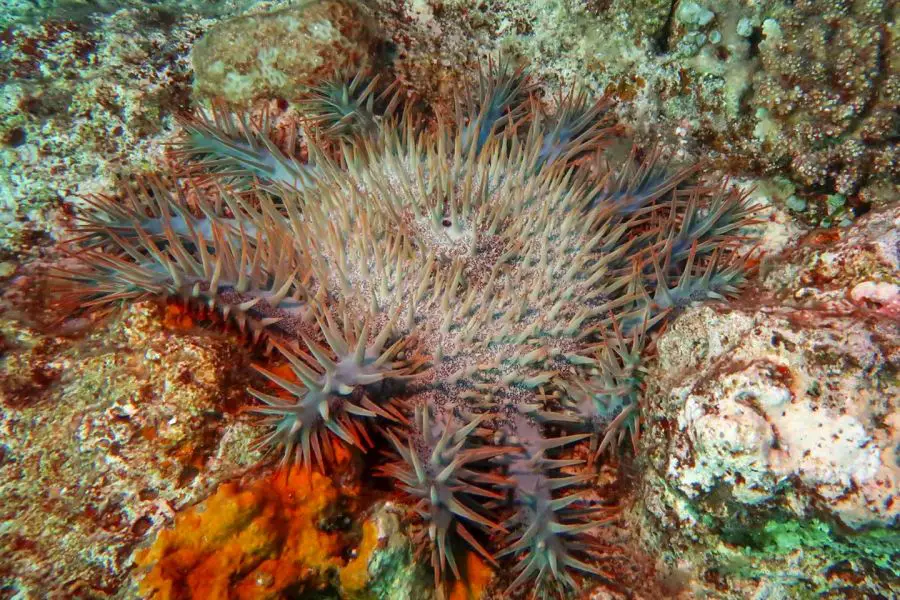
COTs are predators that eat corals. They play an important role in creating balance in the ecosystem. However, if their population dramatically increases, they can consume large areas in a matter of weeks.
I’ve included this starfish in the list of dangerous sea animals in the Philippines because there have been reports of COTS infestation in the reef. If you find one, do not touch them or attempt to kill them in your effort to “save” the reef. You need proper training in COTS removal. When starfishes are agitated or stressed, they can spawn (release eggs).
13. Fire Corals
Fire corals, contrary to its name, are not really corals. They are marine organisms that form colonies and are closely related to the jellyfish family. They are hydrozoans that have nematocysts (small stinging cells) similar to what jellyfishes have on their tentacles.
Divers who accidentally come in contact with fire corals, experience burning pain caused by the venom discharge from the nematocyst. You can treat fire coral injuries by using saltwater or vinegar irrigation. Do not use freshwater as it will just make it worse. Shaving the area has also been known to help remove the nematocyst. Avoid direct contact with bare fingers or hands as the nematocysts can spread and injure you more.
14. Fire Worms
I first encountered fire worms while diving in Dauin. Seeing these creepy crawlies in the sand immediately gave me goosebumps. At the time, I didn’t know what it’s name was but I knew that anything that looked like this would be dangerous.
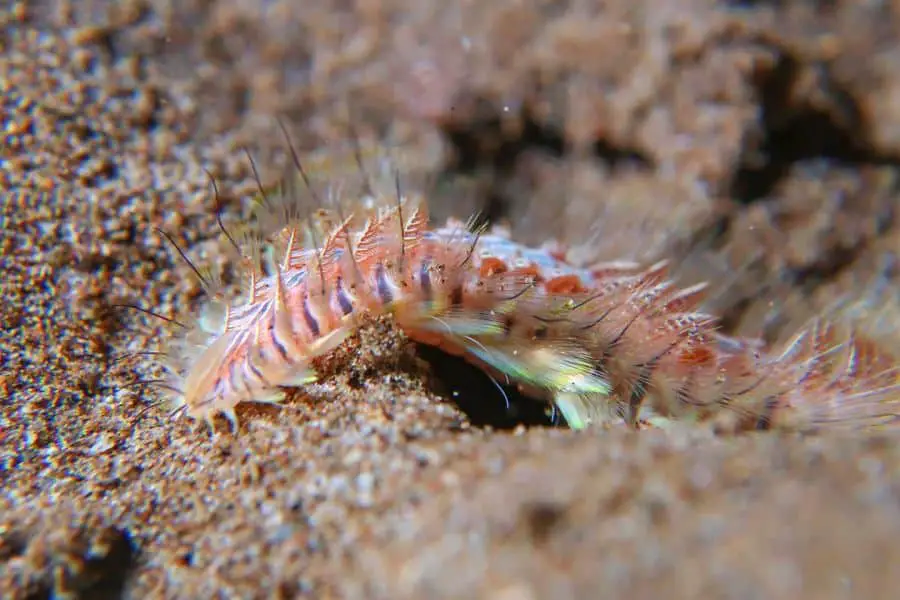
Fireworms are flat and broad worms with lots of hairy bristles on its side. They grow to about 10cm long and found on sandy substrates, usually at night. The bristles of fireworms are filled with toxins so refrain from petting these critters. If the bristles penetrate your bare skin, it will cause you intense itching, inflamation, and numbness.
15. Stargazers
Another scary-looking fish is the stargazers. These fishes are bottom-dwelling predators often found burrowing in the sand with only their eyes protruding. So they do look like they are always gazing at the stars.
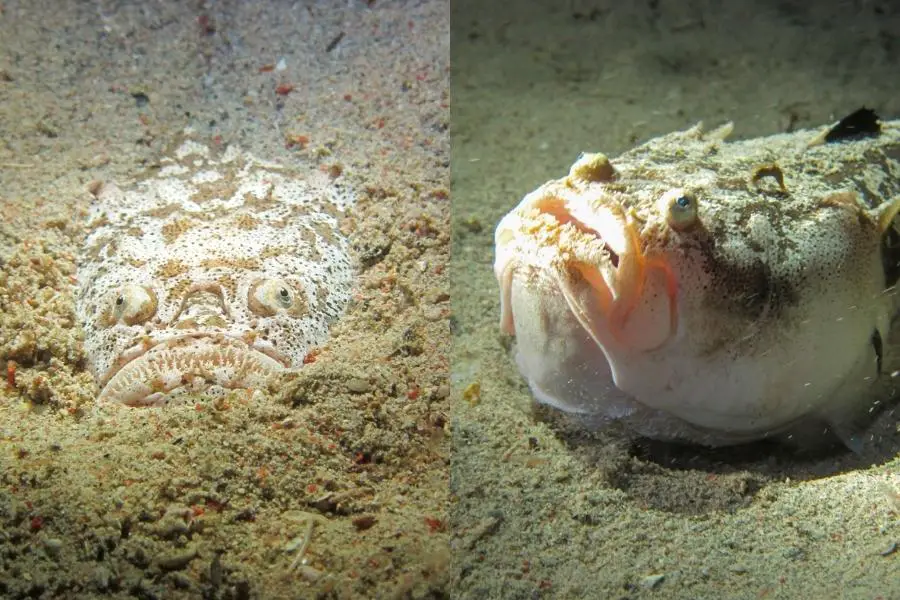
Their mouths are almost at the same level as their eyes so when an unsuspecting creature swims over them they could easily be devoured. They can be hard to spot as most of their body will be hidden under the sand. If you are not careful their venomous spines could cause you extreme pain.

Did you enjoy learning about the dangerous animals in the Philippines? Then you should read this awesome list of 100 of the most popular marine life in the Philippines!
I hope this list helps you in identifying potential animal dangers while underwater and keeps you a bit more safe while diving in the Philippines.
Always remember to keep your distance from the reef by having good buoyancy and proper trim. Even if the water is warm, wear a wetsuit or protective gear in case you get pushed into the reef by another diver or a current.
When you are attacked by a marine animal or accidentally come in contact with any of these creatures, immediately apply first aid and seek medical attention.
Make sure that you dive with reputable shops that know how to handle injuries and emergencies. It also helps to get dive insurance in case of unexpected dive incidents. I use Divers Alert Network (DAN), and thankfully, I haven’t had to use it yet.

Get this Philippines must-see critter list and check of the dangerous sea creatures you’ve encountered in your dives
On a final note, remember that we are just visitors to the ocean. Respect the reef and the creatures that live in it. Most animals will not attack unless they feel threatened. Even if you mean no harm, the animals do not know that.
Pin this for later!
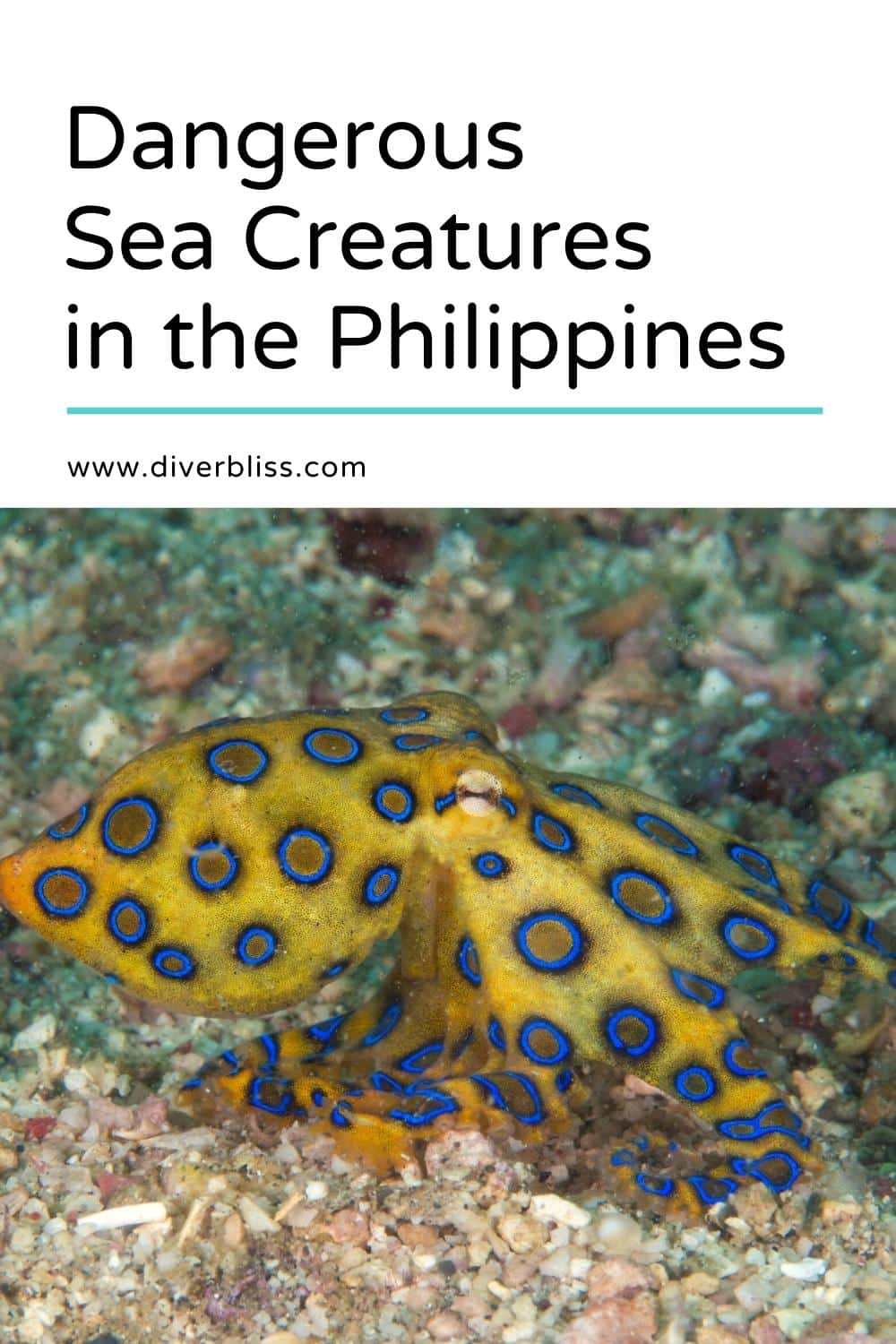
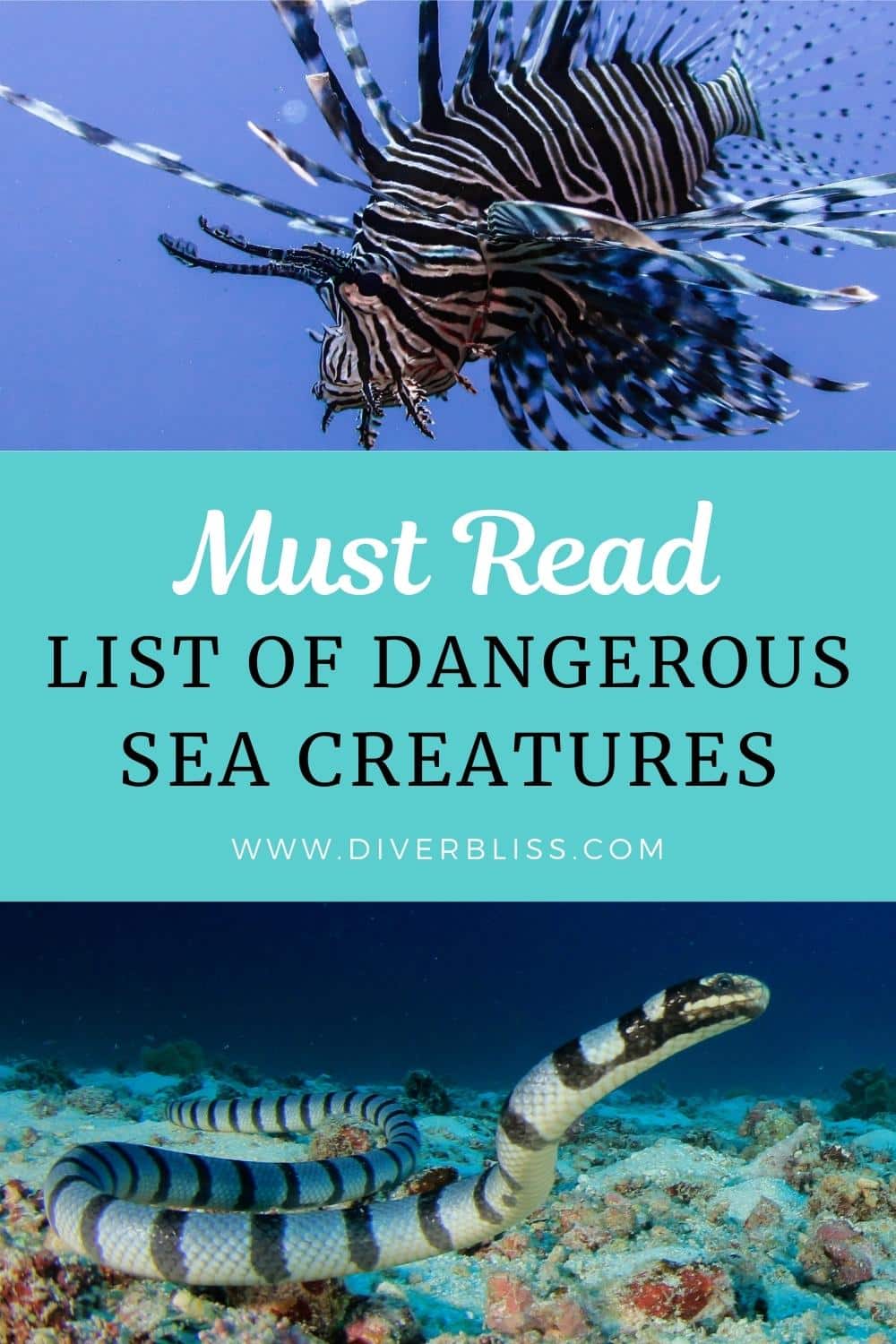
Have you encountered any of these dangerous animals while scuba diving in the Philippines?
What other harmful ocean creatures should I include in this list?
Leave a comment below!
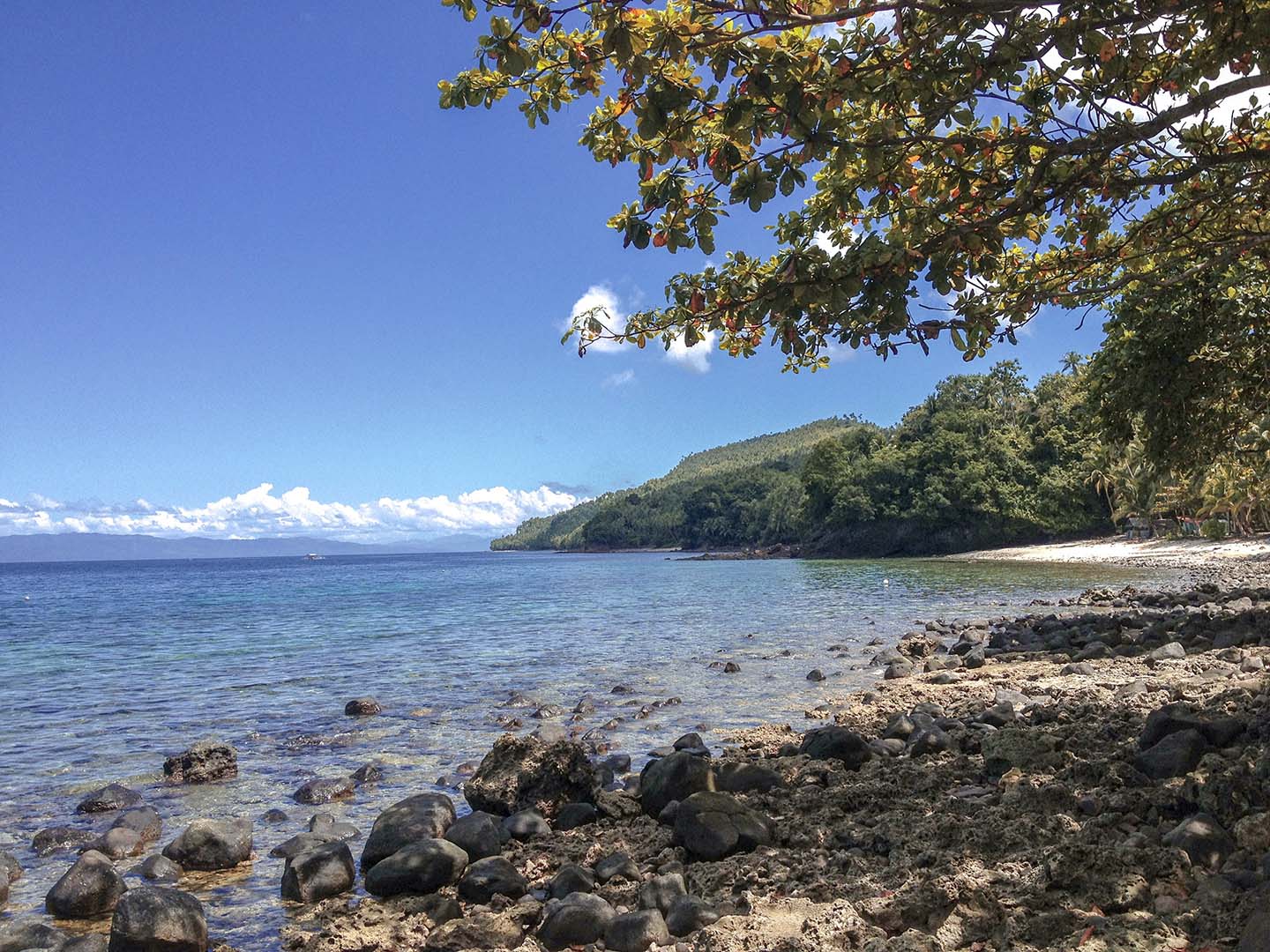
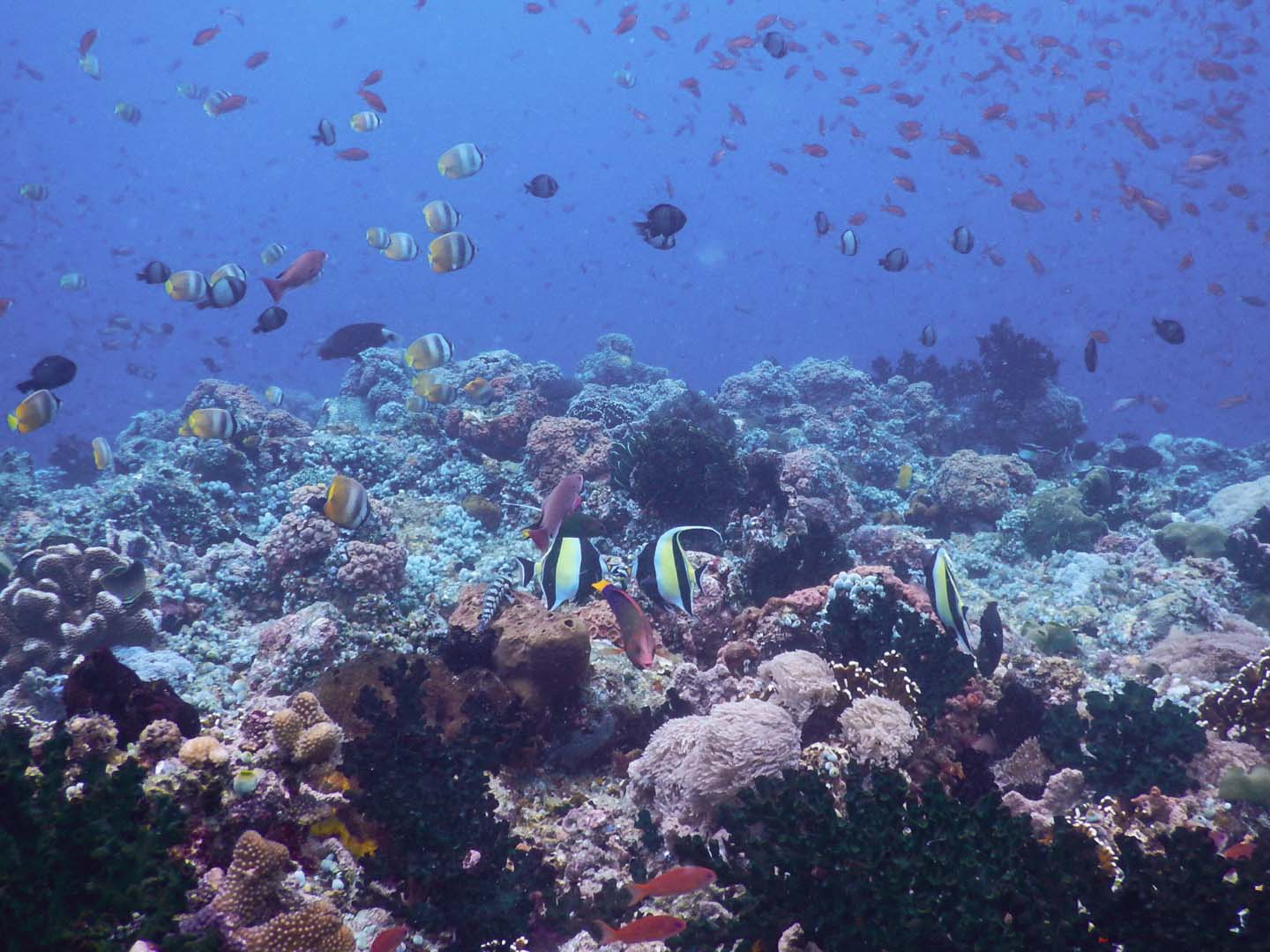
Question…these fish are dangerous. But …if you catch it…can you eat it? After removing poisonous parts.
From what I know, some of these creatures, like lionfishes and urchins, are eaten by some people. There are ways to prepare it so you don’t harm yourself if you eat it.
Well, “Poisonous” and “Venomous” are totally different. I have seen almost all of the creatures on the list. I am aware that they can be very dangerous and I hope this should not stop us from learning more about them and experience them firsthand in the sea. 🙂 One of my faves is the sea snake. They are extremely venomous but very docile and friendly. They just look at you out of curiosity and then get back to their business. lol
Yes, definitely a huge difference between poisonous and venomous 🙂 I believe the animals I’ve listed are venomous (if applicable). I do love seeing the snakes underwater but they still give me the heebie jeebies. 😀